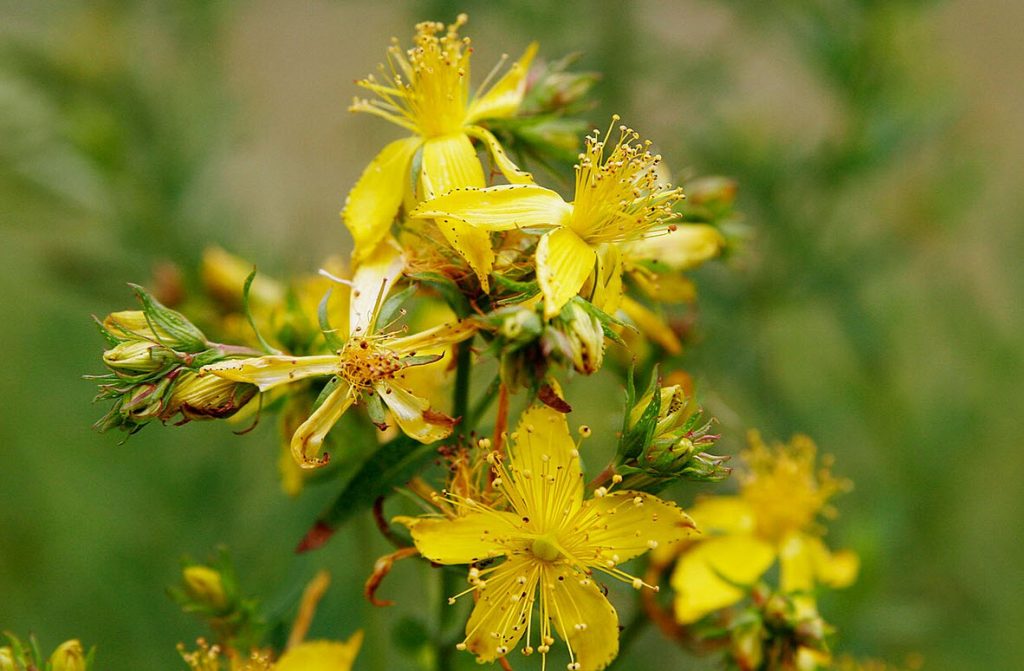Contents
Its Benefits and Uses
St. John’s wort (Hypericum perforatum) is a perennial plant with yellow flowers. Named after St. John the Baptist, it is respected for its traditional medicinal use across the globe. For centuries, this herb has been employed to manage various health concern, famous especially for its mood-enhancing properties. Throughout this comprehensive guide, our main focus will be to explore the unique properties of St. John’s Wort, its medicinal uses, benefits, and potential side effects.

St. John’s Wort remains one of the overwhelming examples of nature’s potential to provide effective medicinal solutions. This versatile herb has found its way from the verdant fields into millions of homes across the world, offering potential reliefs from depression to wound-healing.
As with any supplement or medicine, moderation is key, and medical advice should always be sought before embracing the use of St. John’s Wort.
Characteristics of St. John’s Wort
St. John´s wort is a flowering, perennial plant in the family Hypericaceae. It can grow up to one metre tall and develops bright yellow, star-shaped flowers. When crushed, these flowers release a blood-red oil.
The tiny holes or ‘perforations’ on the leaves of the plant give it the Latin name, Hypericum perforatum.
Phytochemistry
Examples of chemicals present in H. perforatum are hypercin, pseudohypericin, and hyperforin. The concentration of these chemicals can vary significantly between different individual plants and between populations.
A majority of the essential oils in this plant are sesquiterpenes.
There are several chemicals in St. John’s wort that can be harmful to animals and they are probably a way for the plant to deter herbivores. Sheep are especially sensitive to St. John´s wort.
Range and Habitat
St. John´s wort is believed to have originated as hybrid in Siberia; a cross between H. attenuatum and H. maculatum. Today, it is considered native to temperate regions across Eurasia and North Africa. It has been introduced by humans to many other parts of the world, including the Americas and Australasia.
St. John´s wort is found in a variety of habitats, including meadows, grasslands, steppe, open woods, riverbanks, and hillsides. I can adapt well to roadsides. This plant prefers locations where the soil drains well, although drainage is less important in drier environments. It is usually not found above 1,500 metres.
Historical Use of St. John’s Wort
Historically, St. John’s Wort has been linked with various cultures and practices. Here are some examples:
- The Ancient Greeks utilized this herb to ward off evil spirits, and in Classical Antiquity, St. John´s wort was often included in theriacs; a type of medical concoctions.
- Certain Native American peoples used St. John´s wort as an antiseptic for wounds and burns.
- In traditional European folk medicine, this plant was employed for various issues, including as a treatment for melancholia. For som conditions, all above-ground parts of St. John´s wort – or just the dried flower structure – were ground into a powder called herba hyerici.
- The Knights Hospitaller are believed to have treated wounds using the red oily liquid extracted from St. John´s wort.
Medicinal Benefits of St. John’s Wort
Mood Enhancement: St. John’s Wort has been extensively studied for its potential effects on mental health issues, particularly depression and anxiety. Some studies suggest that it may be as effective as standard prescription antidepressants in treating mild to moderate depression, with fewer side effects.
Wound Healing: Traditionally utilized as an external treatment for cuts and burns, St. John’s Wort oil is believed to help facilitate wound healing by promoting blood circulation and reducing inflammation.
Antiviral Activity: This plant is being investigated for its possible antiviral effects, thanks to the active compound hyperforin. It might have potential use against influenza and herpes viruses, but more research is needed to substantiate these claims.
Possible Side Effects
Whilst St. John’s Wort is generally considered safe for short-term use, it’s not without its side effects. These may include dizziness, dry mouth, restlessness, and photosensitivity. It can also interact with various medications, including antidepressants, blood thinners, and birth control pills. To avoid any adverse effects or potential drug interactions, it’s imperative to consult with a healthcare professional before starting an herbal regimen involving St. John’s Wort.
This is a hybrid
St. John´s wort has a chromosome count of 2n = 32. This is because it is a hybrid, probably between H. maculatum subsp. immaculatum and H. attenuatum, and has inherited sets of chromosomes from both parents. It is an allopolyploid plant. The hybridization is believed to have taken place in Siberia.
H. maculatum subsp. immaculatum (16) × H. attenuatum (16)×2 = H. perforatum (32)
